Communication Breakdown In a Global Market
“If it was easy, everyone would be doing it.” I’m not talking about NBA basketball. I’m talking about the challenges of communicating with customers who don’t speak English. Or Millennials trying to talk about Medicare with someone 40 years older.
In this article on Target Marketing, Daniel Burstein, describes this problem on many levels. He’s not joking about the challenges of language and cultural differences. Daniel warns against using humor at all. This always sound advice when it comes to public speaking. Most people won’t get the joke. Others will be offended. The rest will be laughing and texting it to an associate.
Get Your Marketing Team Fluent in Your Customers’ Language
Perhaps your ideal customer speaks English and your marketing team does, as well.
Or you have an international customer base and your marketing team has English and Spanish speakers in the Americas, but French, German, Dutch and Hebrew in EMEA — then Mandarin and Korean in APAC.
So you think you have this language thing covered. Far from it. Getting translations right for an international audience is only the beginning. Your marketing team must also be fluent in the customer’s trade language, mental levers and word preferences — all lingua francas that exceed national boundaries.
…
For marketing leaders, the first step is being aware of the role language can play in subconsciously signaling to your customers that your brand and solution are a right fit for them.
The next step is increasing your marketing team’s “fluency.” This can be especially challenging when members of your team are in a significantly different demographic than your ideal customers (for example, Millennials marketing Medicare, which is unintentionally alliterative) or come from a different industry (marketing is marketing, but B2C luxury property marketing is a different language than B2B enterprise software sales, a lesson I learned early in my career).
Read the rest of the article here:
Language challenges come with marketing opportunities. Master the language differences and your global customers will thank you for it. Of course, if you run a local business in Los Angeles, you may have customers speaking a dozen languages.
Just remember the K.I.S.S. principle: Keep It Simple Shopkeeper. It means you have less to translate and lessons the risk of offending someone.
Marketing Simplicity Means Less Is More
Everyone suffers from information overload today. Just click on one banner ad and a person is followed all over the internet for weeks. Companies bombard clients with the same message everywhere. This can be on their website, Instagram, Facebook, Twitter and more. This “be everywhere” marketing strategy can overwhelm clients and prospects and lead to marketing fatigue. Or simply a lot of unsubscribes and unfollows. This strategy is also a lot of work for you or your staff by trying to post everywhere.
You can learn more about this topic in this article written of Michael Crawford of Target Marketing, The Value of Marketing Simplicy in a Complex World.
How many times have you heard, “the average consumer is exposed to ‘X’ number of ads each day?”
The cliché often accompanies a pitch for a creative platform or placement intended to stand out in a crowd. In competitive markets, this mindset can drive growth in marketing budgets, as people become preoccupied with share-of-voice metrics and prestige placements. That’s why it’s worth remembering the subtext of the cliché is simplicity.
It’s true that consumers are inundated with commercial messages in more forums and formats than ever. Stimulating demand in a saturated advertising environment requires reasonable frequency. More importantly, however, it requires messaging based on your audience’s motivations and interests, simplified for each stage in the awareness-to-conversion process.
You can read the rest of the article here.
https://www.targetmarketingmag.com/post/the-value-of-marketing-simplicity-in-a-complex-world/
With this strategy in mind, you focus on mastering one or two marketing channels. Then add more marketing channels as time and funds allow. You should carefully track your ad campaigns to know which ones increase sales and which ones just cause marketing clutter.
Facebook Under Fire: Ignored by Youth and Attacked By Advertisers and Readers

Should you continue to advertise on Facebook? It depends. Who it your target market? If you target teenagers and young adults, Facebook is losing your market according to a recent survey.
Less-cool Facebook losing youth at fast pace: survey
With mom, dad and grandma signing up in increasing numbers, Facebook is losing younger users in the United States at a faster pace than previously estimated, researchers said Monday.
A report by eMarketer said Snapchat is drawing youths away from Facebook at a quicker clip than Facebook-owned Instagram.
Facebook is still growing in the US market, according to research firm, mainly due to increases in usage by older age groups.
The report is the latest to highlight Facebook’s problem with attracting and keeping young people, who have long been a core user base for the world’s biggest social network.
The research firm said it expected the first-ever decline in the 18-24 age group in the US, a drop of 5.8 percent this year.
It also said that for the first time since its research began, less than half of the 12-17 age group in the United States would be on Facebook, with a 5.6 percent drop in that segment.
The under-12 age group meanwhile will see a decline of 9.3 percent this year, eMarketer said.
The same trend is expected to continue into 2019 and 2020, with declines in all segments of US users under 25, the report added.
Source: https://www.afp.com/en/news/15/less-cool-facebook-losing-youth-fast-pace-survey-doc-zj6ii1
Fewer teens means Facebook may focus on making Facebook more relevant to adults. We’ll see about that. Facebook is also getting pushback from advertisers according to this article in The Wall Street Journal:
Unilever Threatens to Reduce Ad Spending on Tech Platforms That Don’t Combat Divisive Content
Unilever UL +1.66% PLC is threatening to pull back its advertising from popular tech platforms, including YouTube and Facebook Inc., if they don’t do more to combat the spread of fake news, hate speech and divisive content.
“Unilever will not invest in platforms or environments that do not protect our children or which create division in society, and promote anger or hate,” Unilever Chief Marketing Officer Keith Weed is expected to say Monday during the Interactive Advertising Bureau’s annual leadership meeting in Palm Desert, Calif.
“We will prioritize investing only in responsible platforms that are committed to creating a positive impact in society,” he will say, according to prepared remarks.
Unilever, one of the world’s largest advertisers, is leveraging its spending power to push the digital media industry to weed out content that funds terrorism, exploits children, spreads false news or supports racist and sexist views. The consumer-products giant spent more than $9 billion marketing its brands such as Lipton, Dove and Knorr last year, according to the company’s annual report.
Companies have to be very careful to protect their brands from being associated with divisive news and groups.
Mr. Weed said that advertisers need to be outspoken about issues on tech platforms, since they are almost entirely supported by billions of ad dollars.
“One can start by not putting ads on content we do not want to encourage,” he said.
At the same time companies need to monitor the return on investment for all all advertising media. If something is not working, advertising dollars should be spent elsewhere. Because Facebook is free to users, it must please advertisers such as Unilever.
“We fully support Unilever’s commitments and are working closely with them,” said a spokeswoman for Facebook.
Yet how can Facebook do this and remain “neutral” source of news? Facebook is finding out that it cannot according to this article from Wired.com.
Inside the Two Years that Shook Facebook—and the World
How a confused, defensive social media giant steered itself into a disaster, and how Mark Zuckerberg is trying to fix it all.
This is the story of those two years, as they played out inside and around the company. WIRED spoke with 51 current or former Facebook employees for this article, many of whom did not want their names used, for reasons anyone familiar with the story of Fearnow and Villarreal would surely understand. (One current employee asked that a WIRED reporter turn off his phone so the company would have a harder time tracking whether it had been near the phones of anyone from Facebook.)
The stories varied, but most people told the same basic tale: of a company, and a CEO, whose techno-optimism has been crushed as they’ve learned the myriad ways their platform can be used for ill. Of an election that shocked Facebook, even as its fallout put the company under siege. Of a series of external threats, defensive internal calculations, and false starts that delayed Facebook’s reckoning with its impact on global affairs and its users’ minds. And—in the tale’s final chapters—of the company’s earnest attempt to redeem itself.
In that saga, Fearnow plays one of those obscure but crucial roles that history occasionally hands out. He’s the Franz Ferdinand of Facebook—or maybe he’s more like the archduke’s hapless young assassin. Either way, in the rolling disaster that has enveloped Facebook since early 2016, Fearnow’s leaks probably ought to go down as the screenshots heard round the world.
Source: https://www.wired.com/story/inside-facebook-mark-zuckerberg-2-years-of-hell/
You can read this long article if you’re interested. You’ll learn how huge, successful companies have to deal with major problems just like small businesses. Small businesses have the advantage of solving most problems out of the limelight. And without billions of dollars in the bank. I get that too.
The key takeaway here is that you need to own your main digital advertising platform. That is your website. You own it and control it. You also own your email list which you can email as often as you like at next to no cost. You “rent” your platform at Facebook and your “landlord” can raise the “rent” and change your “lease” at any time. Use it while it works for you but be ready to drop it when it doesn’t.
Ad Firms Hit Hard by Apple’s Intelligent Tracking Prevention Feature in Safari
In the beginning, online newsites and bloggers could earn revenue with banner ads. Banner ads later became GIF images which could be annimated. Then users began using ad blocker plugins to make ads disappear. Advertisers began tracking users across the internet. Privacy was lost, bandwidth usage went up and broswer performance declined. Now browsers make it easy for users to “just say no” to digital advertising.
The latest data shows Apple’s Safari has begun to hurt digital advertisers in a big way. This would be a big problem if Safari only ran on Macs. Unfortunately for advertisers, Safari is the default browser for iPhones and iPads. Read this from MacRumor.com:
Internet ad firms are losing out on “hundreds of millions of dollars” following the implementation of anti-tracking features introduced to Safari with iOS 11 and macOS High Sierra, reports The Guardian.
One of the largest advertising firms, Criteo, announced in December that Intelligent Tracking Prevention could have a 22 percent net negative impact on its 2018 revenue projections. Other advertising firms could see similar losses, according to Dennis Buchheim of the Interactive Advertising Bureau.
“We expect a range of companies are facing similar negative impacts from Apple’s Safari tracking changes. Moreover, we anticipate that Apple will retain ITP and evolve it over time as they see fit,” Buchheim told the Guardian.Intelligent Tracking Prevention techniques were introduced in iOS 11 and in Safari 11 in macOS High Sierra 10.13, both of which were released back in September. Intelligent Tracking Prevention is designed to stop companies from invasively tracking customer web browsing habits across websites. Intelligent Tracking Prevention does not block ads — it simply prevents websites from being able to track users’ browsing habits without their permission.
Shortly after the launch of the two new operating systems, advertising groups asked Apple to “rethink” its position and its decision to block cross-site tracking, arguing that Apple would “sabotage the economic model for the internet.”
An open letter signed by the Data and Marketing Association and the Network Advertising Initiative said the collective digital advertising community was “deeply concerned” because Apple’s cross-site tracking prevention is “bad for consumer choice.” “Blocking cookies in this manner will drive a wedge between brands and their customers, and it will make advertising more generic and less timely and useful,” read the letter.
In response, Apple defended cross-site tracking and said its customers “have a right to privacy.” From Apple in September:
Ad tracking technology has become so pervasive that it is possible for ad tracking companies to recreate the majority of a person’s web browsing history. This information is collected without permission and is used for ad re-targeting, which is how ads follow people around the Internet. The new Intelligent Tracking Prevention feature detects and eliminates cookies and other data used for this cross-site tracking, which means it helps keep a person’s browsing private.There was initially an Intelligent Tracking Prevention workaround that companies like Criteo were using following the launch of iOS 11, but as mentioned in Criteo’s announcement, Apple closed that loophole with the introduction of iOS 11.2.
This war isn’t over yet but it doesn’t look good for digital advertisers. You can read the rest of this article here.
https://www.macrumors.com/2018/01/09/ad-firms-hit-hard-by-safari-tracking-prevention/
Should You Subtract AdWords Now?
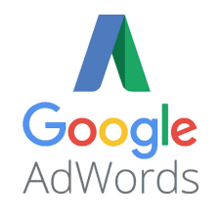
Do you have a contrarian mindset? Do you question the notion that if “everyone’s doing it” than it must be okay? Do you spend money on Google AdWords?
If you answered “Yes” to these three questions than maybe, just maybe, you’ll reduce or eliminate your AdWords advertising.
Many business owners keep advertising the way they always have. They have no idea whether the advertising is still working. Take Yellow Pages as an example. Please, take my yellow pages away now because the font is too small and interest searches are so fast.
Plumbers and lawyers may still get new clients from Yellow Pages. For most people it’s just autopilot and they don’t think about it until the yellow pages rep calls them up to renew for the following year. Then it’s a one year to commitment to renew or not to renew.
Google AdWords have been a goldmine since being introduced by Google in 2000. A goldmine for Google and for millions of businesses as well. Is this still true?
As Fred Gleeck says, “data ends discussion.” The following article questions the necessity of AdWords to bring traffic to their businesses and make online sales. To summarize, a few large companies cut online advertising and it didn’t affect sales growth.
A Startling Anecdote About Online Ad Spending From Restoration Hardware
Category 1 storm clouds are gathering over what has traditionally been one of the most lucrative, and perhaps only profitable, sectors to come out of Silicon Valley in decades: online advertising.
Two months ago, it was P&G which fired the first shot across the “adtech” bow when not long after it announced it was slashing its digital ad spending because it thought it was not getting the kind of return on investment it desired, it made a striking discovery: “We didn’t see a reduction in the growth rate.” CFO Jon Moeller said “What that tells me is that that spending that we cut was largely ineffective.”
Proctor & Gamble thinks that “bots” were clicking on their Facebook ads rather than human beings who actually buy products.
The advertising system has become so automated that companies pay for advertising on fake news websites with fake traffic.
A separate, if just as concerning problem emerged last month, when the WSJ reported that online ad giant, Google, would issue refunds to advertisers for ads bought through its platform that ran on sites with fake traffic, and generated no actionable advertising “clicks.” Just how much of Google’s ad revenue (and thus profits and market cap) had been inflated over the years by said “fake ads”?
The article quoted the CEO of Restoration Hardware who discovered where most of their clicks were coming from.
So fast forward to last week, when during Thursday’s Global Retailing Conference organized by Goldman Sachs, Restoration Hardware delightfully colorful CEO, Gary Friedman, divulged the following striking anecdote about the company’s online marketing strategy, and the state of online ad spending in general (courtesy of @parsimony16). What Friedman revealed – in brief – was the following: “we’ve found out that 98% of our business was coming from 22 words. So, wait, we’re buying 3,200 words and 98% of the business is coming from 22 words. What are the 22 words? And they said, well, it’s the word Restoration Hardware and the 21 ways to spell it wrong, okay?”
Stated simply, the vast, vast majority of online ad spending is wasted, chasing clicks that simply are not there.
Let me spell this out for you. Restoration Hardware was buying AdWords for 3,200 keywords. These are words which prospects might enter into search engines. Paying for 3,200 keywords on AdWords would cost a lot of money. Yet the top keyword was the name of the business, “Restoration Hardware.” The rest of the top 22 were misspellings of “Restoration Hardware.” Let me make up a few for you as….
- Restoration Hardwhere
- westoration hardware
- rustoration hardware
- restoration heardwhere
I had to work hard to keep my spellchecker from correcting my typos. I copied the last one into the Google search box and “Restoration Hardware” appeared as the top entry. I doubt that Restoration Hardware paid for this placement. Google became the #1 search engine because it overcame spelling mistakes to deliver search results based on what you want to get. Regardless of your ability to spell.
One wonders how long before all retailers – most of whom are notoriously strapped for revenues and profits courtesy of Amazon – and other “power users” of online advertising, do a similar back of the envelope analysis, and find that they, like RH, are getting a bang for only 2% of their buck? What will happen to online ad spending then?
A drop in online advertising should be a big concern for Google and Facebook. It is not your concern. You should be concerned on spending money on advertising which will pay for itself by bringing in new and existing clients. You need to do what is in your best interest.
You should have no doubt that Google will do what’s in its best interest. Such as using direct mail to get new clients for Google AdWords. Yesterday, I received a direct mail offer from Google AdWords customized for my company:
Right now, people are looking for businesses just like yours.
Make sure Reality Marketing LLC shows up on Google the moment potential customers search for what you have to offer-whiter they’re at home or out on the go. Learn how Google can help.
If people are looking for me, they will search for “Richard Emmons” and they will find me one way or another. I don’t plan to spend money on AdWords on these keywords:
- richard emmons
- richard evans
- richard simmons
You can use AdWords wisely to help people who are looking for your products and services. This can make you money. Just be sure to send your clicks to special landing pages or special offers so you can calculate whether the ads are working or not.
7 Ways To Write a Great Headline
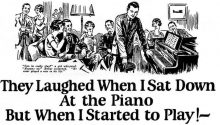
When you write great headlines, you improve the results of every advertisement, flyer, invitation, press release, client letter, and email you write. Remember that 73% of the buying decision is made at the point of the headline. And “buying” can mean opening the email message, listening to the rest of the TV or radio ad, reading the rest of the newspaper advertisement, buying the product or registering for a community seminar. So let’s spend some time looking at proven ways to create great headlines.
Ted Nicholas has written books selling over a million copies including How To Form Your Own Corporation For Under $75 . Ted recommends writing the headline first before writing any other part of the ad. He starts out by listing every possible benefit he can think of. Next he turns benefits into headlines and writes as many as he can think of. Sometimes as many as 200 for one product! Once you’ve settled on the main headline you can start putting together the rest of the ad. You can use the “runner up headlines” as “sub-headlines” to highlight other advantages of the product or service.
Remember that your headline must speak to a want, need or desire of your prospective customer. This is the big benefit that your product or service offers.
Now let’s look at 7 ways to write a great headline.
- Add the words “How To” to your existing headline. Tests using the exact same ad with only these 2 words added to the headline increased results by 17%. I did this with a headline for living trust seminars beginning with “Avoid Probate…” and made it “How To Avoid Probate…” and improved results. People are looking for solutions to problems and they want to know “how-to” do something.
- You can offer to fill a gap in the marketplace with the words “Finally,…” or “At Last, You Can…” These headlines build curiosity because you may solve a problem they’ve had for a long time. “At Last, You Can Stop Worrying About Your Retirement”
- Everyone hears “No” from parents, teachers, bosses, so hearing “Yes” gets them to stop in their tracks. “Yes, You Can …”
- Using a client testimonial can create a great headline by adding credibility and personalizing the product or service. Here’s a classic “testimonial” type ad written by copywriting ledgend John Caples: They Laughed When I Sat Down At the Piano But When I Started to Play! —
- Ask a question: “Tired of Waiting For the Phone To Ring?” or “Worried About Running Out of Retirement Money?”
- Two words, “Free” and “New”, are proven to grab attention: “Free Report On Avoiding the 5 Most Common Mistakes of Retirement Planning” and “7 New Ways To Hire Better Employees” Both of these headlines have a number in them. For some reason odd numbers of lists work better. The exception to this rule is “Top 10” lists which work well.
- Try to dig deeper and uncover the “hidden benefit” of your product, seminar, or service. Ted Nicholas used “The Ultimate Tax Shelter” as the headline for selling 200,000 copies of his book on setting up your own corporation. Yes, this single ad generated over $4 million in book sales. Yet the book itself didn’t use the phrase “tax shelter.” He says that the “tax shelter possibilities are why many people form corporations.”
When you see the same exact ad running again and again in your local paper or in a magazine, you know it must be working. And a great headline is the number one reason an ad will work again and again. Folks see the ad, read the headline and then the rest of the ad and finally take action.
Now take a look at your own ads and see how you can improve the headlines.
How To Write an Effective Advertisement
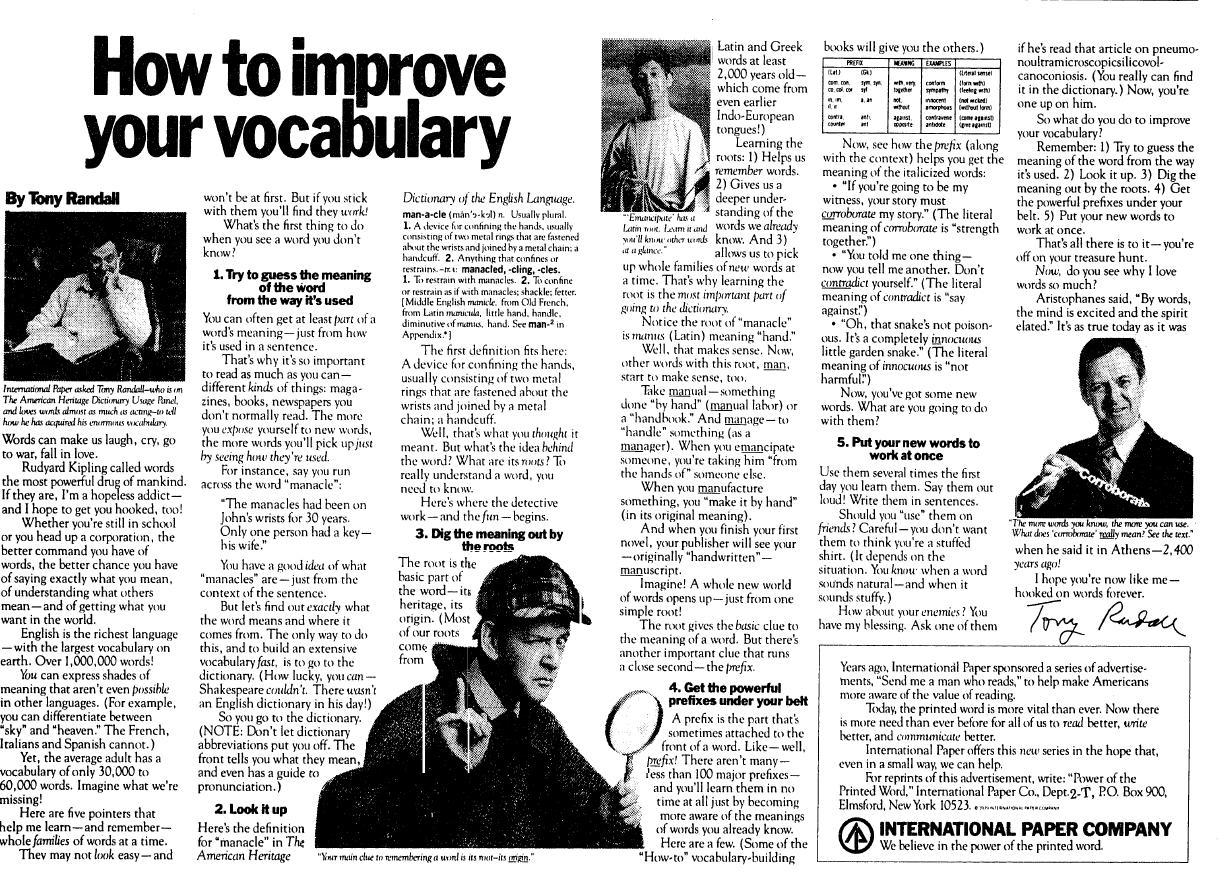
You begin the process of creating an effective ad by thinking of one of your best clients, a wealthy widow by the name of Sally Jones. You write the ad for Sally so your ad will speak to Sally and people like her.
You absolutely do not want to design the ad to please yourself. As author Jerry Reitman wrote, “Bait the hook to suit the fish, not the fisherman.” One of you is enough! You want more Sally’s so your ad should speak to Sally and get people like Sally to take action.
Over the years, successful writers have developed copywriting formulas which produce effective ads, TV commercials, and sales letters. I first learned about the “AIDA” formula in 1989 from marketing expert, Jay Abraham.
AIDA stands for attention, interest, desire and action. Your ad must get the buyers’ attention, build interest in your product or service, create desire to own that product or service, and finally ask the viewer or reader to take action to get that product or service.
Attention
You get your reader’s attention with a powerful headline. This is the key.
Ted Nicholas became famous selling his best selling book, How To Form Your Own Corporation Without An Attorney For Under $50. He spent hundreds of millions of dollars promoting this and other books in full-page magazine ads. He says that “73% of the buying decision is made at the point of the headline.”
Without a powerful and persuasive headline, your ad copy won’t be read. Your offer won’t be considered. You’ll waste your money.
So what should a good headline do? In Bob Bly’s The Copywriter’s Handbook, he describes the four functions of a headline:
- Get attention. This gets the reader to read more of the ad.
- Select the audience. Who do you want to attract? Who would you rather not attract?
- Deliver a complete message. David Ogilvy, author of Confessions of an Advertising Man, says that 80% of readers will only read the headline. Headlines like “Merrill Lynch Is Bullish On America” at least let the reader know the name of the company.
- Draw the reader into the body copy. The promise of solutions to current or potential problems gets the reader to continue reading more of the ad.
Let’s consider these four functions as we look at a few headlines.
“How To Win Friends and Influence People”
Dale Carnegie wrote this best-selling book during the 1930‘s. The book’s title served as the headline for ads selling the book. This headline grabs the reader’s attention and builds curiosity because who doesn’t want more friends? So this headline/title does #1 and #4. In a way, it selects the audience (#2) because everyone wants more friends.
“Did Your 401(k) Become a 201(k)?”
This headline grabbed attention (#1) by dramatizing a 50% fall in the stock market. It selected the audience (#2) by assuming the reader had a 401(k). It pulls the reader into the copy (#4) because it implies a solution to the problem of a falling retirement portfolio. While powerful, it missed on #2 by not offering a solution to the problem. I suppose “Turn Your 201(k) Into a 301(k) With Chinese Growth Stocks” would fulfill #3 but only testing would show if it was as effective.
“Worried About Outliving Your Retirement Funds?”
This headline grabs attention (#1) by pointing the pain of running out of money during retirement. It selects the audience (#2) advisors want to reach because pre-retirees and retirees worry about this; 25 year-olds don’t give it a thought. It can’t deliver a complete message because the problem will differ greatly from person to person. Yet it raises a real concern during times of rising prices and low interest rates and draws the reader into the rest of the ad (#4).
The most common mistake in advertising is using your business name at the top of the ad as the headline. Look at all the ads in the yellow pages or your local paper. How many put the company name the top in big letters? Most. Use a powerful and compelling headline and you’ll have far more effective ads. Why? Because your prospects will read on….
Interest
Next, you need to build interest in the reader for your service or product. Keep the reader interested by providing more facts which show in words or imagery you can deliver on the promise made in the headline. Pile on multiple benefits that will improve their lives.
Validate your claims by offering proof you can deliver on your promises. This proof can include references to your education, certifications, and years in business. Perhaps you’re a radio show host or have written articles in your local paper or other major publications.
Include some client testimonials and let your customers praise you in print. In local markets, this provides powerful proof that you will deliver what you’re promising.
Desire
You build up desire by helping them imagine how they’ll feel after buying your product or service. Your product will make their life better and more enjoyable. Whether it’s a night on the town or a better retirement. you want your prospect to want what you have to offer.
You should offer the best guarantee you can. You can also build desire by offering additional free bonuse or limited time offers.
And how do they fulfill their desires? By accepting your offer….
Action
Finally, you need to close the deal and get the reader to act now and accept your offer. You want them to take an action step to get them to your website or place of business.
Your offer will differ depending on the ad placement. Yellow pages ads run all year long so the offer might be for a free report on “The 7 Most Common Mistakes and How To Avoid Them.” An advertisement for a no obligation tax planning analysis would work during tax season. Yet an ad for a free community seminar will only work a week prior to the event.
In a previous article, I wrote about giving away free information. Just remember that you need to offer your prospect something of value so they’ll contact you.
Your offer ends with a call to action. “Call our office today to receive your free report.” Or “Visit our website to get all the details and find out how they can get a free sample..”
At the bottom of your ad you can include your company name, address and contact information. Make it easy to read so they can take action and get a hold of you.
In my next article I’ll look show you some more ways to create effective headlines.
How To Get More Bang For Your Advertising Buck
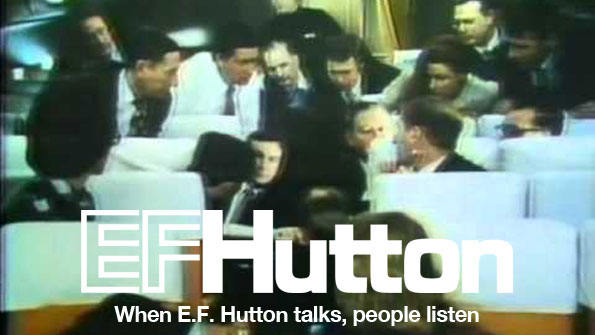
“Half my advertising is wasted, but I don’t know which half.” ~ John Wanamaker, 19th century retailer
You’ll find improving your advertising to be one of the best ways to leverage your marketing dollars. Why? Because an ad costs the same whether it brings in 1 call per day or 10 calls per day. So improve your ads and you’ll get more calls without spending an extra dime on advertising.
Let’s define the two major types of advertising: General (or image) advertising and direct response advertising.
Copywriter Bob Bly defines general or image advertising as “advertising that seeks to instill a preference for the product in the consumer’s mind to promote the future sale of the product at a retail outlet or through a distributor or agent.” Image advertising is seen every day in TV commercials for consumer products and magazines such as Forbes and Fortune for institutional advertising. Some famous image advertising campaigns included:
“Merrill Lynch is bullish on America.” This slogan was introduced during the 1971 World Series.
“When E. F. Hutton talks, people listen.” Very memorable ad…but would it make you call a broker and invest some money?
E.F. Hutton no longer exists as a business although their old ads remain alive on YouTube.com.
Many businesses place small display ads in their local newspapers to get their name out there. Similarly, I see “business card” sized ads in the local Chamber of Commerce magazine of guess what? The company owner’s business card. Normally this would fall under image advertising because it just gets your name, contact number, and perhaps areas of expertise out in the marketplace. A caller might tell you they saw your ad in the Chamber paper. Or you can ask them how they heard about you. Otherwise, you won’t really know if it’s helping or not.
Bob Bly defines direct response advertising as “advertising that seeks to get orders or leads directly and immediately rather than build an image or awareness over a period of time.” This type of advertising is the opposite of image or general advertising.
Direct response ads are easy to spot when you see a coupon at the bottom of the ad. Or you’re asked to call an 800 number to order the product. You measure the response to these ads to know how well the ad is working. You can change the headline or the offer and know if you improved or hurt the ad.
You can turn your “image ad” into a direct response ad by offering a free report. This could be a written report or an audio interview on CD. The viewer of the ad is asked to call your office to get their free report. You capture their name and address so you can mail them the report. You can also ask, “Would you like to receive helpful and interesting investment information via email?” You can mail them the report with a copy of your last physical newsletter. Most importantly, you can measure the success of the ad because you’ll know how many people call in to request the report.
Direct response advertising also allows you to measure the relative strength of different advertising mediums. For instance, you might advertise in 2 different yellow pages. You could offer different reports and track which yellow pages works better for you. Otherwise, you just have to guess. Online searches may eventually put the yellow pages out of business. Only time will tell. But if you track your own yellow page ads you’ll know when it’s time to pull the plug on yellow pages.
Glitzy image advertising might win a design award. And get posted on YouTube.com. But you want to win new clients. So use direct response advertising to get prospects to call your office now and get them in your marketing pipeline. Measure your results so you can test different ads. Keep your winning ads and cull the losers.
How To Put Your USP To Work
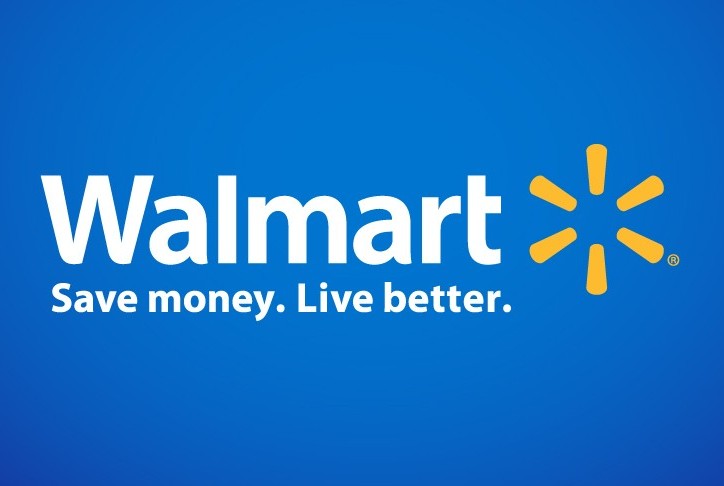
In a recent post we spoke about creating a USP or “unique selling proposition.” Your USP answers the question of why someone should do business with you rather than with a competitor or just do it themselves. Your USP sets you apart from your competitors. Walmart’s USP reminds its customers that they are saving money and improving their quality of life by shopping at Walmart. You need to put your USP to work to grow your business. Your goal is to put your USP in all your marketing materials and in every communication piece your clients see. Let’s list some easy ways:
- Your website banner. Change your header graphic and every page of your website will be updated.
- Your website articles. Update your bio page, qualifications page, etc. to emphasize what makes you different.
- Your invoices and statements. Maybe you can put in the footer or the cover page of the statement.
- Your business proposals. You want your USP to appear near your picture.
- Your answering machine message: “Thank you for calling John Smith & Associates, where we help you make money and retire better. How may I help you?
- Your email signature block
- Your fax cover sheet
- Add it to your byline in articles you write.
- Add it to introductions when you speak in public
- Display advertisements.
- Press releases
Other places may wait until you need to reprint:
- Your business cards.
- Your practice brochures.
- Your letterhead. Consider adding your USP to the bottom of your signature block until you reprint.
- Your checks. You never know if one of your vendors needs a financial advisor.
- Your yellow page ads
- Your billboards. Unlikely I know but what about the sign on the front of your office?
- Your employee memos
The last one might seem odd at first glance but really it’s critical. Imagine if one of your employees was asked, “What makes your boss different from all the other financial advisors out there?” What would she say? Imagine, a Fed Ex employee being asked in 1978, “Why should I pay ten bucks to mail a letter?” “I don’t know” would be the wrong answer! All your employees should know what makes you different and better and be able to explain why you’re the best choice. You need to ensure that you can deliver on your promise so your employees must be trained to deliver on your USP. Proverbs 29:18 states, “Where there is no vision, the people perish.” Use your USP training to get your employees jazzed up on how you aim high and want to over deliver on your promises. 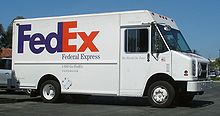
Remember that you can update your marketing materials over time. And when your business changes, you’ll need to update your USP to match. Be glad you don’t have a fleet of 30,000 trucks to repaint every time you update your USP!
Kickstart Your Marketing With a USP and Set Yourself Apart

Every business and business professional should have a “USP” which stands for “unique selling proposition.”
Without a USP your advertising will have a plain vanilla, me-to appearance which won’t lead people to take action. When you have a good USP and deploy it in your advertising, you’ll attract more clients like you want. You’ll also keep away folks who aren’t your targeted clientele.
Rosser Reeves invented the term “USP” in the 1960’s. In his book, Reality in Advertising, he defines what makes a good USP:
1. Each advertisement must make a proposition to the consumer. Not just words, not just product puffery, not just show-window advertising. Each advertisement must say to each reader: “Buy this product, and you will get this specific benefit.”
2. The proposition must be one that the competition either cannot, or does not, offer. It must be unique—either a uniqueness of the brand or a claim not otherwise made in that particular field of advertising.
3. The proposition must be so strong that it can move the mass millions, i.e., pull over new customers to your product.
Here are some well known examples which meet this 3-part definition:
Domino’s Pizza: “You get fresh, hot pizza delivered to your door in 30 minutes or less — or it’s free.” Notice it says nothing about Mama’s recipe, taste, or low price. This created a whole new market at a time when it took 30 to 40 minutes to get a pizza at pizza restaurants.
FedEx: “When your package absolutely, positively has to get there overnight” This USP answered the question, “Why would anyone want to pay ten bucks to mail a letter?”
M&M’s: “The milk chocolate melts in your mouth, not in your hand” Rosser Reeves created this USP over 40 years ago and it still works great.
Wonder Bread: “Wonder Bread Helps Build Strong Bodies 12 Ways” Maybe it does, maybe it doesn’t. It sure sold a lot of bread.
Did it occur to you that 3 of these 4 USP’s are no longer used by their companies? I had to look up Wonder Bread and found they use “Soft. Delicious. Nutritious.” Fed Ex does a lot more today than overnight delivery so they use “Save more as you ship more, Think FedEx First.” Pizza Hut’s website emphasizes that it wins national taste tests.
You also need to remember to use your USP in all your ads and in contact with customers and prospects. I noticed in the fine legal print on Domino’s home page:
Domino’s new hand tossed pizza has been reinvented from the crust up to be our best tasting pizza ever. Guaranteed. If you are not completely satisfied with your Domino’s pizza experience, we will make it right or refund your money.
This should be in BIG print in the headline of the webpage. 99% of web visitors will miss this. Guarantees are a great way to create a USP.
Your USP should be visible and become part of your daily operations…not just something for your advertisements or website. Let me give you an example.
My mom came across a letter written to me back on April 23, 1976. I had written to M&M-Mars after getting some red, green or brown coloring on my hands while eating some M&M’s. I can’t remember what motivated me to write them. Maybe it was school assignment. Maybe I was just being a wise guy. Here’s their reply:
Dear Richard:
Thank you for your letter and your interest in M&Ms Chocolate Candies.
In our advertisements we say: “THE MILK CHOCOLATE MELTS IN YOUR MOUTH – NOT IN YOUR HAND”. The melting to which you referred was undoubtedly caused when the pure food coloring in the thin sugar shell came in contact with the moisture in your hands. This sometimes happens if the candy is held for a while.
The objective of our advertising is to acquaint consumers with the fact that M&Ms Chocolate Candies are neat to eat and do not have the mess of other chocolate products that do not have thin sugar shells protecting the chocolate centers.
Thank you again for your interest in writing to us.
Very truly yours,
(Miss) Eleanor C. Trautwein
Customer Service Manager
Now let’s talk about USPs for business professionals. Your USP should answer the question, “Why should someone choose you as their advisor over all other advisors in your area and instead of doing it themselves?”
Obviously, you can answer this question in numerous ways. Let’s categorize them as good, bad and ugly.
Let start out with “ugly” USPs for business professionals.
Ugly ones will get you in trouble with your compliance department. This may affect you if you are a financial advisor, insurance agent, CPA or tax professional. For instance, Montgomery Ward first used “Satisfaction guaranteed or your money back” in 1874. Worse yet, “Retire as a millionaire…” These sound lame because compliance departments don’t like anything which is promissory in nature. FINRA won’t let advisors use client testimonials so that eliminates a lot of ideas for USPs. Your industry standards will set boundaries on what you can say.
Next, what makes a “bad” USP for a professional?
Something vague or a cliche like “Quality Service. High Standards.” Every one can say this so why bother? If your client or prospect reads something and says “So what?” or “Duh. Every advisor does that” then you know you need to work harder. I see this all the time with advisor websites which use the boilerplate verbiage provided by the website company.
What makes a good USP for a professional?
A good USP describes who you are, what makes you different and tells your story in a way that sells your prospect on your ability to get the job done for them. So an advisor’s USP should be more of a core story than a tagline like Walmart’s “Save Money. Live Better.”
You shouldn’t put too much weight on your designations. There are over 50,000 CFP’s in the United States. Many advisors argue this designation is the best one to have. Few would argue that it sets them apart like it did ten or twenty years ago. Yet, how many advisors describe why they pursued the CFP certification and how it improved their ability as a planner? Plus states are cracking down on new designations these days so you wouldn’t want to build your marketing around a designation which may be on the outs in the near future. Even if you’re the only one in town with it.
How do you get started creating your own USP/core story?
Easy, just start calling up your best clients. Ask them why they initially started doing business with you and why they continue to do business with you. Something about you attracted them to you and kept them from going elsewhere. Or may be they did go elsewhere and came back to you. What did they not like about that other financial advisor?
Next, look at your own story and how you got to where you are today. You’ll want to uncover details about your life which made you the advisor you are today.
Finally weave this information together so that your own unique story is told in a way that will attract your a-list clients. Never forget you are a unique individual and the “U” in “USP” stands for “unique.” Be yourself. Don’t be bland. Stand out from your peers.
